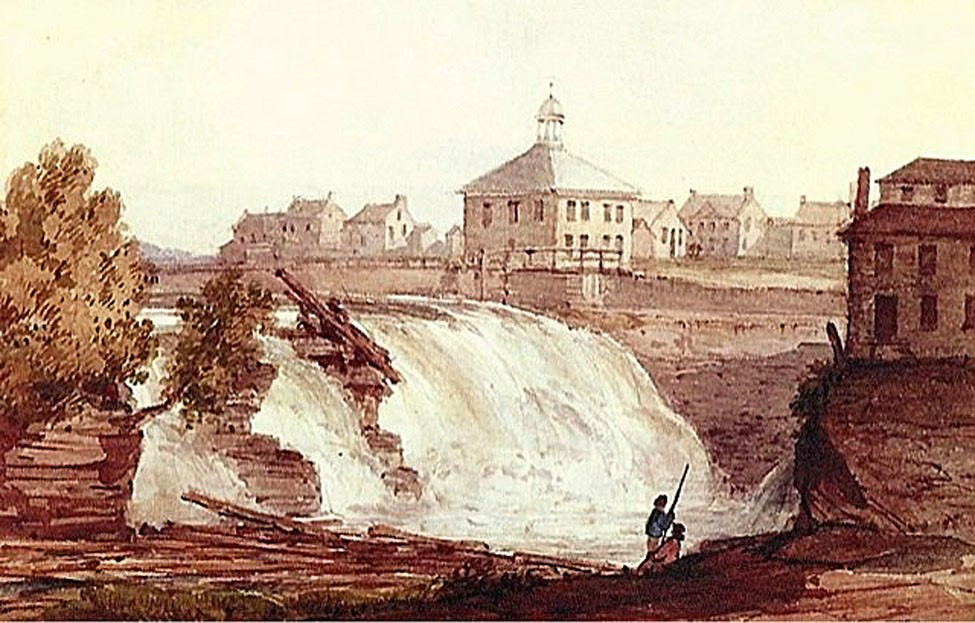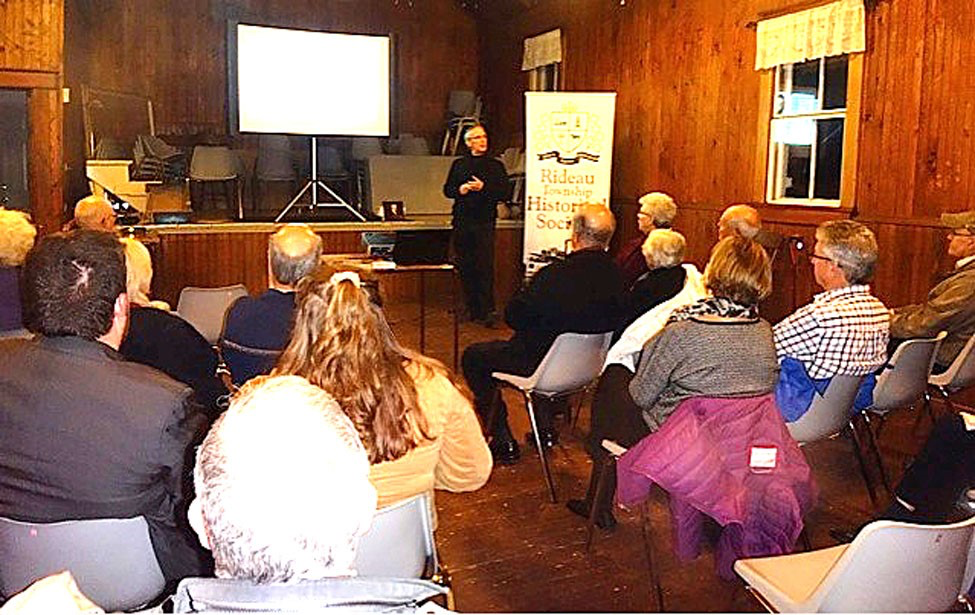Walking in the Footsteps of Philemon Wright
Walking in the Footsteps of Philemon Wright
Presented by Rick Henderson. Article by Susan McKellar. Photos by Ruth Wright. October, 2018.
Aylmer native Rick Henderson shared his enthusiasm for his illustrious ancestor, Philemon Wright, at the October RTHS meeting in Carsonby, and by the end of his talk we all had learned a lot about the beginnings of Hull and area as well as Wright and his family. Henderson’s presentation was enhanced by interesting maps and illustrations.
Rick is the 4th great-grandson of Philemon Wright; his father did genealogy and Rick has followed in his footsteps. He stressed that as well as documenting the history for his family, he was motivated by the importance of personal relationships in stories. His research on relationships has led to new information and corrections to previous errors made by historians.
Philemon Wright (1760-1839) and his wife Abigail Wyman (1760-1829) were married in 1782; in 1800 they left their established families and their home in Woburn, Massachusetts with their six children and moved to British North America. Two more children were subsequently born. Abigail was an important person in her own right, serving her neighbours and community as a nurse and even performing doctor’s duties.
Wright founded the first permanent settlement in the Ottawa Valley. He was heavily involved with the timber industry, and started several businesses. However Rick stressed that Wright was a farmer first and foremost, and that he considered that his highest avocation.
Philemon’s son Philemon Jr. was 17 when they moved to Canada, and as the eldest he worked hard for his family, especially when his father was away from home in the lumber camps. Philemon Jr. worked at farming, building roads and bridges, and even in timber. Unfortunately he died at the age of 38, while building a road to Grenville.
On a snowy day in November he was leaving for home when his carriage was overturned. He broke his neck and perished. Two of his brothers also died young. His brother Ruggles was the sole surviving son and so is better known now.
Philemon Wright and family arrived in 1800. There were a few settlers at Grenville, but basically there were no settlements farther up the Ottawa Valley, no roads, no canal, etc. Even though it was the ancestral home of the Anishinabeg (Algonquin) and was the territory through which they passed, hunted, etc. There were none living there when Wright arrived.
Along with Wright came other families (some relatives), including 33 labourers, mainly axe men, 14 horses and 8 oxen. A man named London Oxford was an associate of Wright’s and followed him up the Ottawa Valley; he was the first man of colour in the area.
Farmland in Woburn had been expensive and not easily available, and Wright had heard about a proclamation to the effect that if you settled on land in Canada for five years and created infrastructure, you could then own it. This led to his decision to immigrate.
A leader in the new community, Wright poured all his resources and energy into building “Wright’s Town”, the first settlement in the area, starting in 1801. As well as shops, he built Wright’s Tavern, crowned with a beautiful cupola, that became a well-known landmark.
In 1808 a fire wiped out the town, but his sons Philemon Jr. and Tiberius, with help from others, rebuilt the town. Because it was small and not over-run with garbage etc., it was bucolic and sweet-smelling, and became a resort for people from “stinky” Montreal.
Rick described his successful search for the remains of the foundations and walls of the tavern, in the Eddy buildings in Hull, and showed us pictures.
Wright was an entrepreneur with a hand in many different endeavours as well as the town. He started the timber industry in the Ottawa Valley, and had a hand in many communities. The Wrights made high grade cement – the dam that created Dow’s Lake in Ottawa was made with their cement. There is a document in the Wright archives on how to make “Roman” (waterproof) cement. They built steamboats, and the first large-scale timber slide at Chaudière Falls, 24 feet wide.
Wright also had several farms to which he gave names: Columbia Falls farm was on the location of the current Plaza Hotel, and Chaudière Farm was the kernel of Aylmer. By the time of his death, Wright owned 36,000 acres.
For those who were not able to attend the meeting and learn about this fascinating character, Rick’s book is available at www.lulu.com/spotlight/RickJH99




This note is for Rick Henderson. Regarding his recent talk to the OHS about Philemon Wright, I have an easy question. Can he please forward any information about the four millwright Chamberlin brothers from Merrimack NH he (Philemon) recruited to build mills on the Gatineau River. These Chamberlins are our direct ancestors.
Thanks very much.
Sorry for the delayed response. Rick Henderson’s RTHS presentation was in October, 2018. However, I’ve included a link to his Capital Chronicles website, which contains his contact information: https://www.capitalchronicles.ca/about